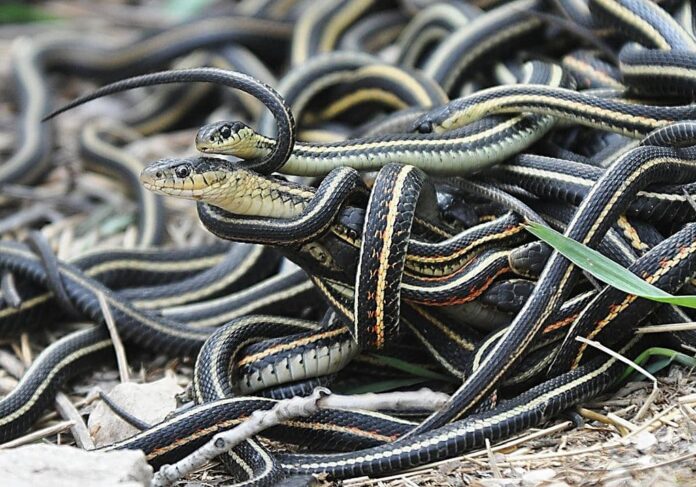Nature is like a huge box of everything, and weird animal mating habits also include as well. Some animals have bizarre ways of breeding while others are straight-up scary. In the animal kingdom, mating is not always about fun since it can be competition or performance, and more. You will find 9 animals with peculiar mating habits in the list below. Let’s take a look and see which one you think is the most bizarre.
1Banana Slug

There are many fascinating things about banana slugs, a bright yellow and large slug species that lives in moist conifer forests. Banana slugs are hermaphrodites, meaning they have both male and female sex organs that allow them to mate with themselves. However, these slimy creatures usually court and mate with each other instead of conducting self-fertilization. When a slug is ready to mate, it leaves behind a chemical in its slime to signal potential partners. Once two banana slugs find each other, they will eat their partner’s slime before mating.
The mating occurs at night, and banana slugs reproduce by exchanging sperm that fertilize the eggs internally with their mates. There are 3 species of banana slugs, and their mating lasts from 10 minutes to hours depending on the species. It is common for 2 among the 3 species to attempt to eat their mate’s penis after copulation. This is why when the mating is finished, a banana slug will gnaw its penis off. One banana slug can lay between 20 to 75 translucent eggs per clutch. Once the clutch is laid on leaves or in a log, the eggs are abandoned right away.
2Bed Bug
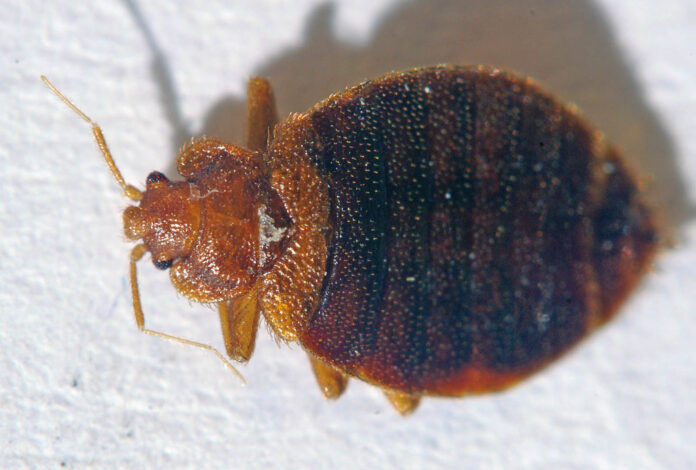
Traumatic insemination is what the mating of bed bugs is called, and it sounds quite weird already. It refers to when a male stabs the female’s abdomen which is a specialized hardened reproductive organ to inject sperm. A male bed bug use the “aedeagus” which is a long and sharp reproductive organ to break through a female’s exoskeleton. The fertilization can take place at any location on the female’s abdomen cavity called the hemocoel. The male’s gametes will travel to the bloodstream before arriving in her ovaries or reproductive gametes.
Bed bugs do not have a mating season, they simply breed and lay eggs all year round. When they have enough food, bed bugs start to show an interest in mating. One female can be responsible for an entire infestation without immediate actions taken. This is why bed bug infestations occur fast and are difficult to control in some cases. A pregnant female bed bug is extremely hungry, and she will lay eggs after a few days of feeding on human blood. One bed bug can lay from 3 to 8 eggs a week continuously for up to 18 weeks.
The bizarre and unsatisfying part is that female bed bugs are capable of laying eggs every day after fertilization. With enough food and favorable conditions, a female bed bug can lay more than 200 eggs in her lifetime. The warmer the temperature also means the more eggs the females will lay. This is why some bed bugs can have 3 or more generations in just one year. Baby bed bugs emerge from the eggs in around 6 to 17 days, and they will immediately feed after hatching. Both adult and baby bed bugs are able to survive long periods of time without food.
3Flatworm
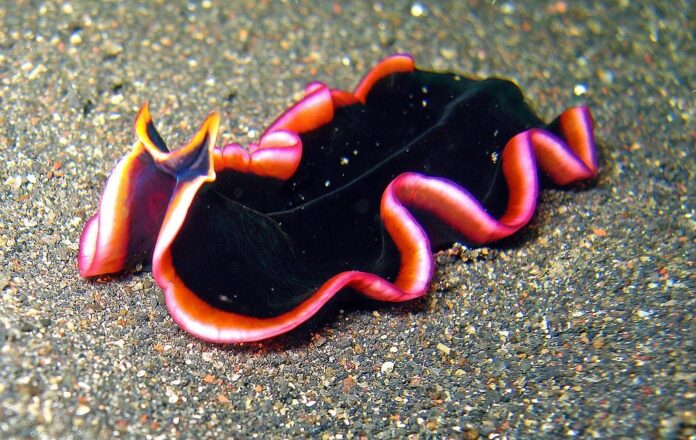
Just like banana slugs, flatworms are also hermaphrodites which means they have both male and female reproductive organs. Slightly different from bed bugs, they reproduce with one another by hypodermic insemination known as a crude copulation act. Two flatworms will toward one another, roll around together, and avert their penis and stylets outward. As one of the weirdest mating habits, two partners attempt to stab each other during the ritual. This can result in injury, but their wounds often heal within 24 hours.
When one partner successfully stabs its mate, it attaches itself to its mate’s skin with its stylet embedded. This stays on for a few minutes as it injects the sperm into its partner’s body to fertilize the eggs. A flatworm can lay up to hundreds of eggs that will hatch in about 10 days after fully developed. After the mating is done, two flatworms are not likely to mate with the same partners again. In case mating partners are scarce, flatworms can also reproduce asexually in environmentally stressful conditions as well. There are 2 methods which are Budding and Transverse Fission.
Budding is when there are buds grow out along the length of a flatworm’s body, forming chains to close to another individual. Simply put, a flatworm splits off a part of its body which allows the separated portion to regenerate into a new worm. As for Transverse Fission, it occurs when the posterior half of the flatworm attaches itself to the substrate while the anterior half continues to move forward. This stays on until the two halves pull apart where each half regenerates to form a complete worm. Some flatworm species can fragment themselves into several pieces that form several small flatworms.
4Garter Snake
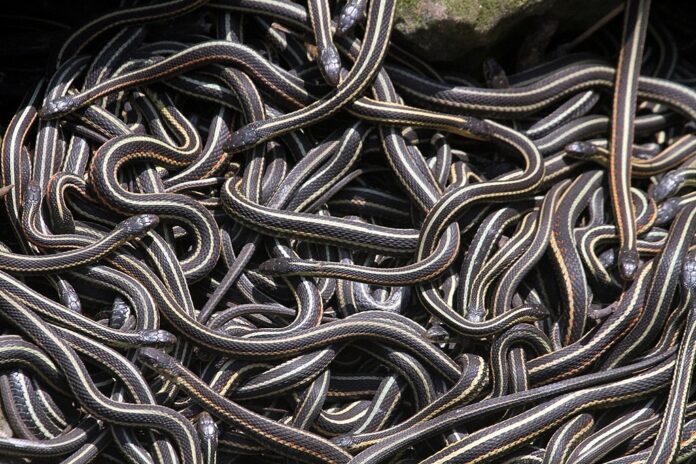
Garter snakes are one of the unique snake species that hibernate in winter. When they emerge from hibernation in spring, garter snakes will start mating right away. So how do they find mates right after hibernation? In the fall, many garter snakes congregate in pits so that they can gather together when winter is over. During mating season, female garter snakes release pheromones to attract mates around her; all of them. The more, the merrier but there are around 7 at most.
Dozens of male garter snakes will come for one female, and they all mate with her in one mass mating ritual. This is known as the “mating ball”, where several males compete to mate with that one female. All the males will push each other aside to get themselves into an appropriate position to start mating. Once the female has mated, she will stop giving off her pheromone and the males will disperse within minutes. Female garter snakes give birth to live babies of up to 80 or more in a brood.
5Giraffe
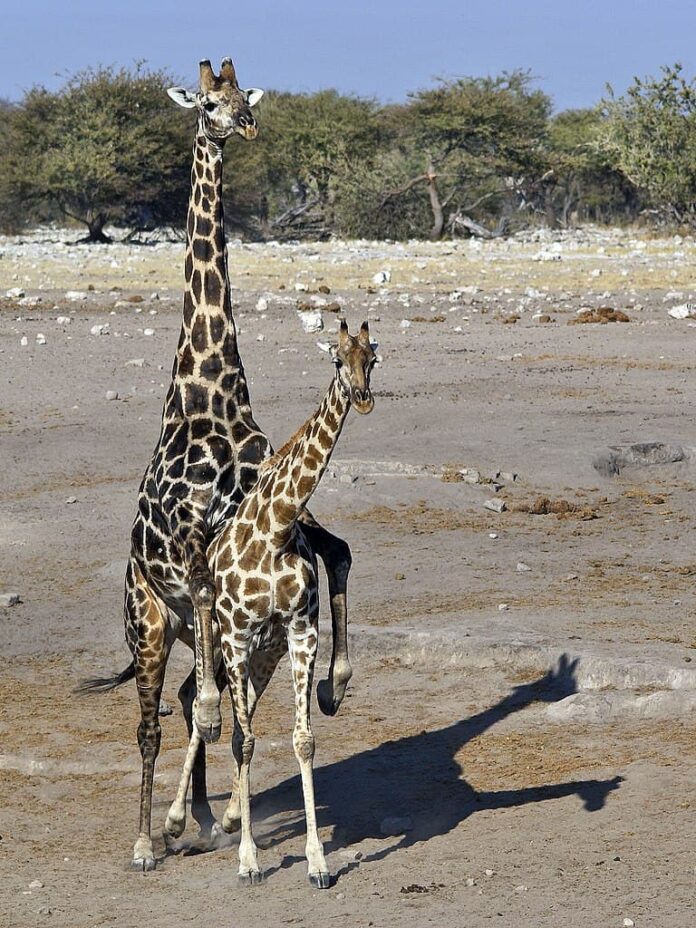
While there are so many ways to find miss right, male giraffes have their own weird way to determine perfect mates. Giraffes are polygamous, and larger males are the ones who do most of the mating. To find the females that he wants to mate with, a male giraffe will taste her urine. He does so by following the female giraffes around, strategically bumping against them to get a whiff of their urine. A little taste allows him to figure out whether or not the females are ovulating and ready to mate. If she is ready to reproduce, she will stand still and let the male does his job.
6Hippo

These walking barrels are polygamous, meaning one male hippo mates with multiple different female hippos within his social group. Think a male hippo is lucky? Think again because mating only happens every two years due to the females’ gestation period which takes 8 months. The female will not mate again after giving birth until the baby is mature. Hippos do not have any specific breeding season, but they usually mate during the late dry season and early rainy season. That is when there are enough food and water for them to give mate and birth to the young.
So what makes their mating habits quite weird compared to other mammals on land? First things first, fights among males in the group are very common during mating season. Bulls won’t be able to mate until it is the dominant male of the group. When a male wins all the fights, he will roam around grazing or resting herds to search for mates. He smells each female’s butt with the purpose to find a female in heat to mate with.
Once he found the perfect mate, he will tease her and push her out of the herd into deeper waters. The female eventually tries to fight him off by using her clashing jaws. However, the males will force her into submission and mount her. When copulating, the male gives a wheezy honking to announce that his mating has started. In some very rare cases, hippos may choose to mate on land but it is not common among them.
7Hyena
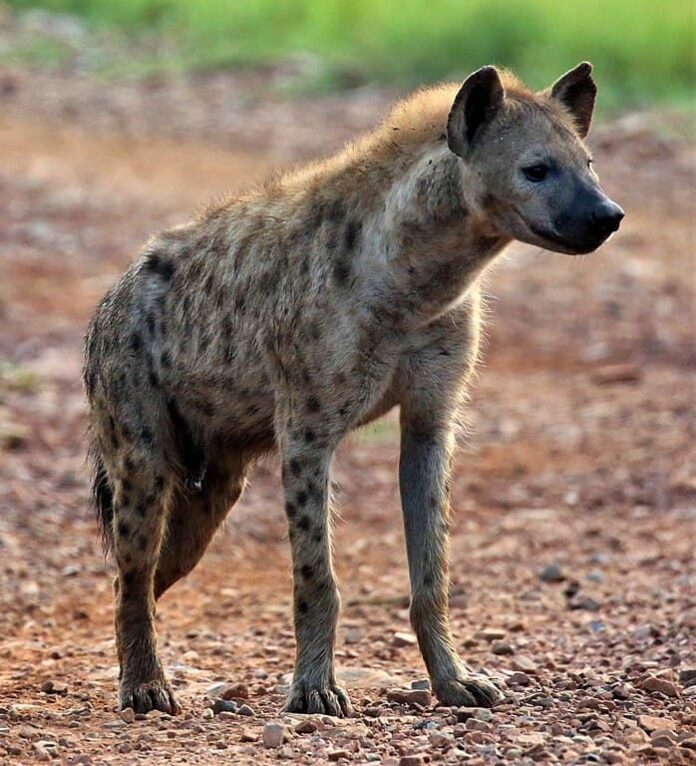
When it comes to the weirdest mating habits, hyenas are one of the animals with a reputation for this title. Female hyenas have extremely enlarged clitorises that are as long as half a foot in length that looks like penises. Because the females have “pseudo-penis”, mating is not a trip in the park for the males. He will have to insert his erect penis into the female’s organ whose opening points forward and downward. So the male must hop around behind the female while thrusting impulsively backward and upward.
Mating is very difficult for male hyenas, but they will succeed anyway. Female hyenas can give birth to a few cubs out of their large clitoris after 110 days. Giving birth is not easy for hyenas, and clitoris ruptures can take weeks to heal. Cubs are born with their eyes open and have long canines, and they will attack each other shortly after birth. This is quite common for litters of the same sex, and that can result in death for weaker cubs. The mother will nurse her cubs for 12 to 16 months before they start to forage or hunt by themselves.
8Porcupine
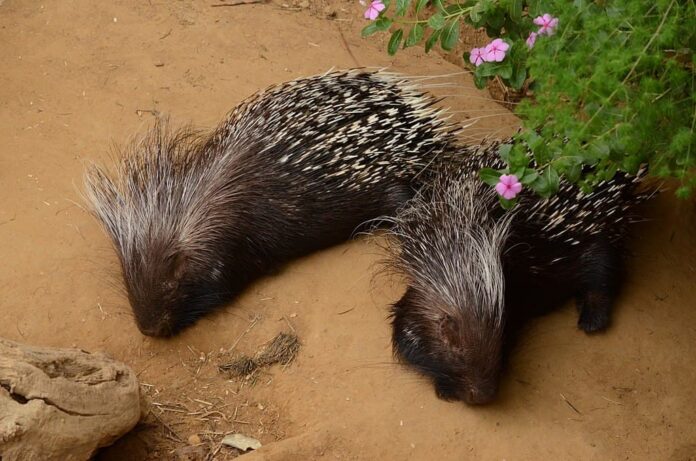
You probably wonder how porcupines do it when it comes to some difficult mating habits, and here is how. New World and Old World porcupines have different methods of mating during the breeding seasons due to their habitats. New World porcupines live in trees while Old World porcupines live on the ground. Old World porcupines’ mating habits involve a mating dance during which the male showers the female with urine. If the female agrees, the male approaches and mounts her with one paw on each of her sides.
For the New World porcupines, the females secrete a thick mucus that mixes with their urine from the tree they live in. The odor attracts males around the area, and the first male that arrives will sit in the same tree below a female. If there is another male, he may fight him off to secure his dominance to mate. Once he succeeds that, he will approach the female and spray his urine on her. A few drops will lead to a chemical reaction that allows the females to fully enter the estrus.
Although the courting is on the tree, New World porcupines mate on the ground. When porcupines mate, they tighten their skin and hold their quills flat so that they will not injure each other. Mating may occur repeatedly until the female loses her interest and climb back into the tree. Both New World and Old World porcupines’ intercourse often associates with loud grunts, squeals, and whines. Porcupines give birth to one or two babies, and they are born with soft spines that will harden within a few hours after birth.
9White-Fronted Amazon Parrot
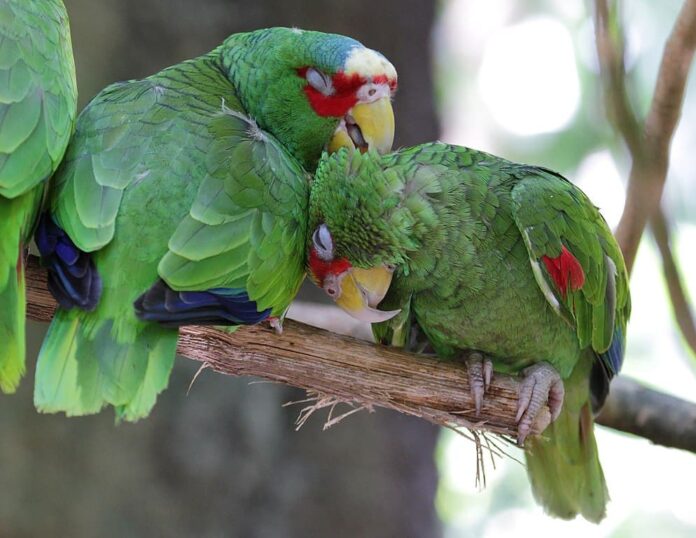
Male white-fronted Amazon parrot vomits in the female’s mouth during their mating rituals, making that one of the weirdest mating habits. Their breeding seasons start from February until June or July, and the male usually becomes aggressive during this time. These parrots will start looking for mates, and two parrots will begin kissing one another after selecting a suitable partner. The kiss involves both of the locking their beaks and playing with each other’s tongues. This is why white-fronted Amazon parrots are one of the few animals that kiss. At some point during the kissing, the male will vomit into the female’s mouth, speaking of a bad kisser. This habit does not serve any purpose at all, and no one knows why they do that either.
Related Post: Female Animals That Eat Their Mates

